
8 minute read
CLASSICS IN THE REAR VIEW
WORDS SAM HEXTER
With all manner of new-fangled hybrid hypercars hitting the market, McLaren releasing a new 800bhp carbon monocoque, road-going jet fighter every other month, and the market’s unsustainable obsession with 0-100km/h times reaching fever pitch, it’s about time we restored balance to the world – a palate cleanser, if you will. We’re taking a look in the rear view; to celebrate classics and future classics. Cars that once represented the pinnacle of motoring that now exist as rare breeds and sought-after marques that have all celebrated significant anniversaries this year.

Jensen Interceptor © FernandoV / Shutterstock.com
Jensen Interceptor
Making its debut 70 years past, Jensen Motor’s original Interceptor saw production between 1950 and 1957 and proved an instant hit when it launched to market. With a punchy 4-litre under the hood and many borrowed underpinnings from current Austin models, this curvaceous grand tourer secured the future of Jensen Motors following the second world war. Despite moving away from the company’s British lineage and eventually being designed in Italy, the Interceptor borrowed many styling cues from much larger and more aggressively fashioned American muscle cars – including the Interceptor’s distinctive ‘fastback’ rear window and long, jutting nose that would be revived in future iterations. This proved a popular design choice with the public and helped bring a new audience to the otherwise rather dainty British brand.
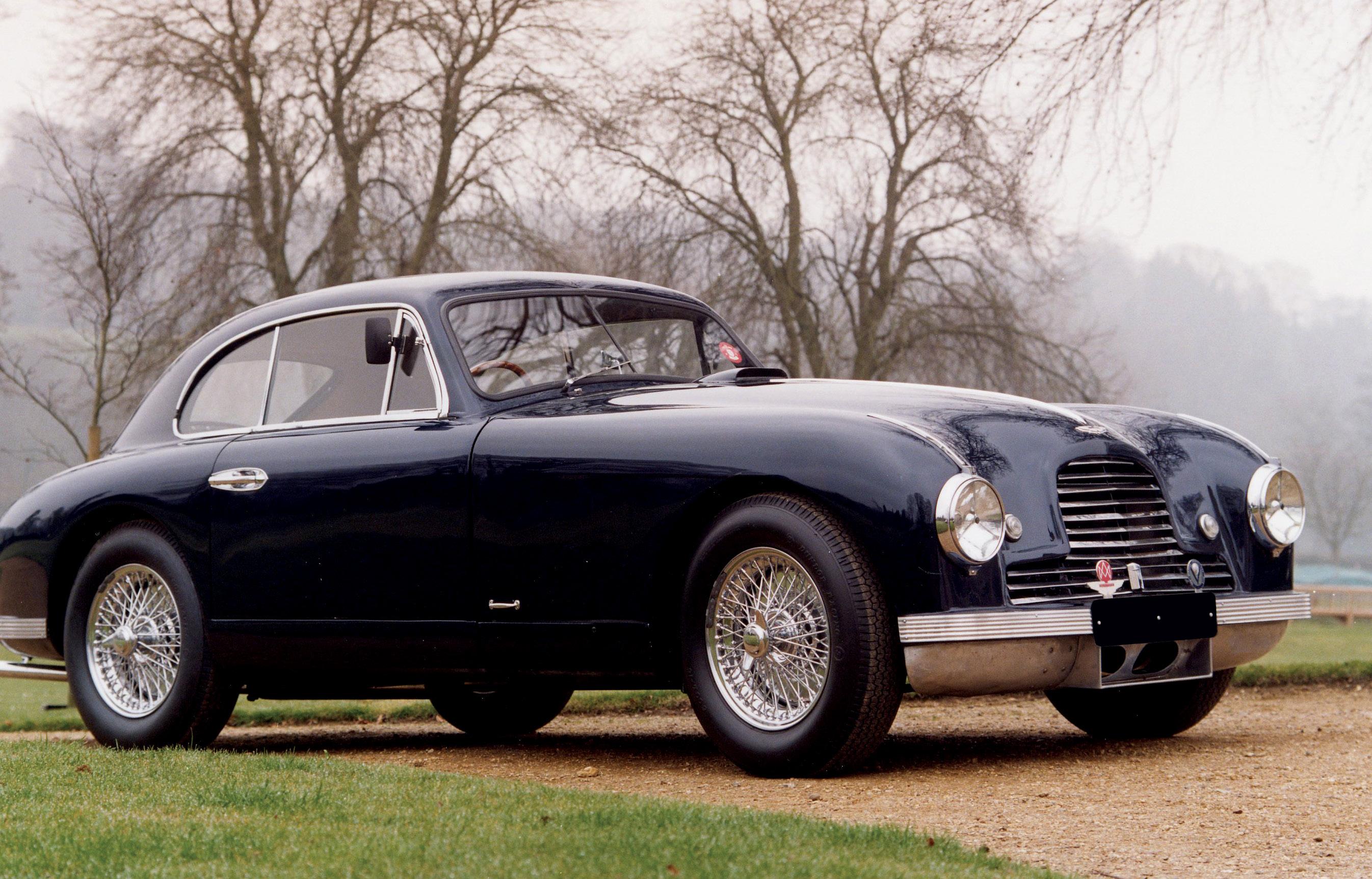
Aston Martin DB2
Aston Martin DB2
Aston Martin DB2 The first Aston to don the DB badge from the factory, this iconic vehicle celebrates 70 years of sheer beauty in 2020. This lightweight British ‘drophead’ coupé, which was actually designed by motoring titan, W.O. Bentley, was powered by a 2.6-litre straightsix, developing in the region of 125hp.
While its 11.2 second ‘sprint’ to 100km/h is certainly sluggish by modern standards, the DB2’s incredible looks and petite frame have truly stood the test of time. When new, during its limited production run from 1950 to 1953, this elegant Aston sold for around £1,598. Current market values are north of £300,000. If you’re fortunate enough to own one, hold on tight.
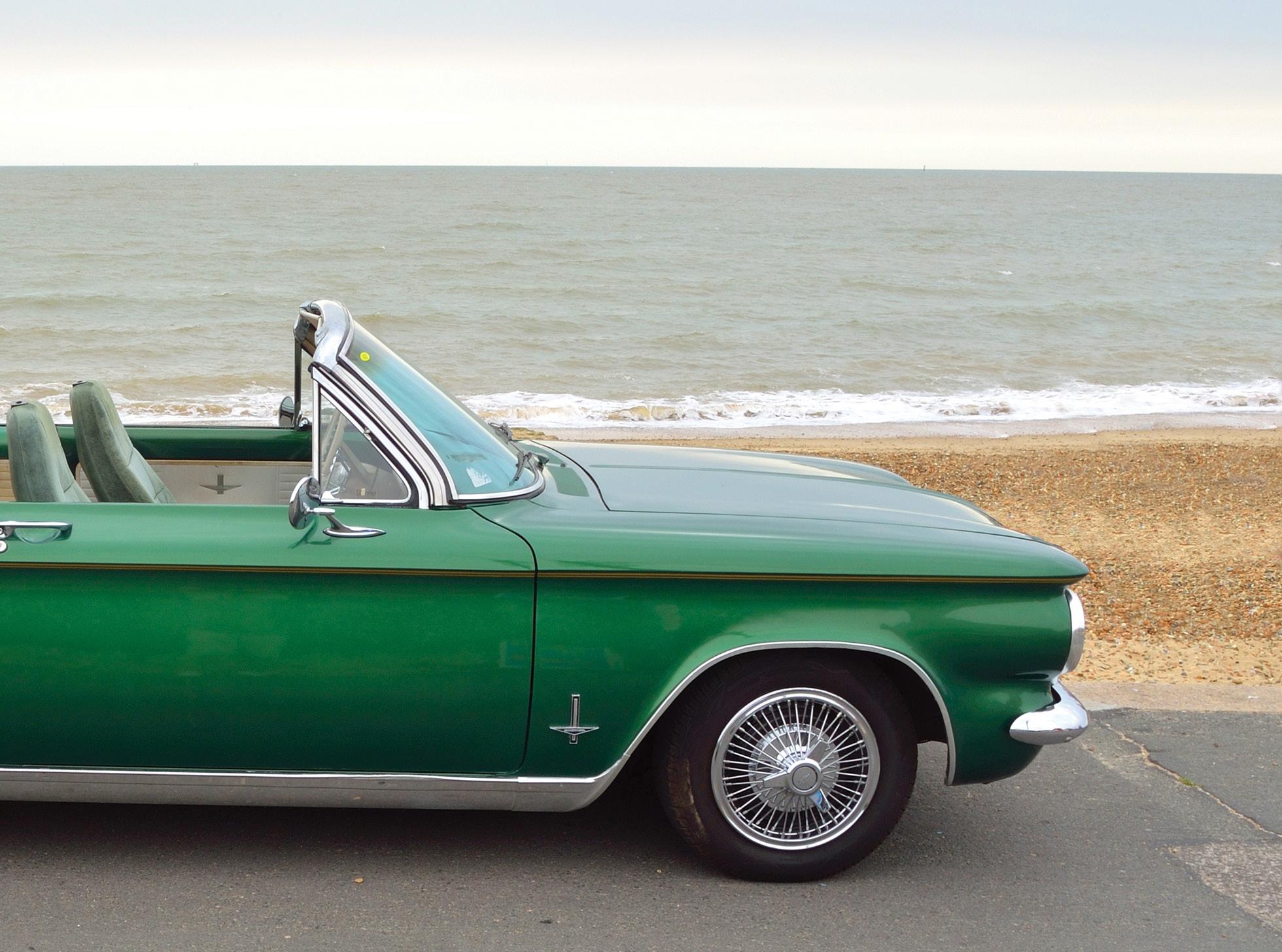
Chevrolet Corvair © Martin Charles Hatch / Shutterstock.com
Chevrolet Corvair
Celebrating 60 years since its public release, the Corvair is a truly unique piece of American motoring history. Based upon the success of Volkswagen’s Beetle, the Corvair is the only Americandesigned, mass-produced vehicle to ever feature a rear-mounted, air-cooled engine.
Production ran for only nine years, meaning you’ll rarely come across this infamous Chevy in the wild. This rear-engine unicorn featured the wheelbase of a compact car, but the ‘fastback’ American design cues shared by other models in Chevy’s outrageous and ultra-futuristic line-up of cars from the 50s and 60s, including the Corvette and Bel Air – from where the hybrid ‘Corv-air’ name was derived.

Chevrolet Corvair © Martin Charles Hatch / Shutterstock.com

Ferrari Mondial © Betto Rodrigues / Shutterstock.com - Konstantin Egorychev / Shutterstock.com
Ferrari Mondial
The Ferrari Mondial, or Mondial 8 to be exact, started life some 40 years ago, back in 1980. Only 703 examples were produced over the 8’s initial two-year production run, but the Mondial name would live on right up until 1993 in various guises. Ferrari’s mid-engined V8 grand tourer shared the same powerplant as found in the 308 GTB but featured a slightly longer wheelbase. Punching out a comparatively tepid 214bhp and offering seating for up to four people meant the Mondial 8 quickly established a reputation as one of Ferrari’s more ‘practical’ vehicles. This misunderstood ‘family-friendly’ Ferrari can now be picked up for around €30.000 if you can find one – the most affordable springboard into classic Maranello ownership? Quite possibly.
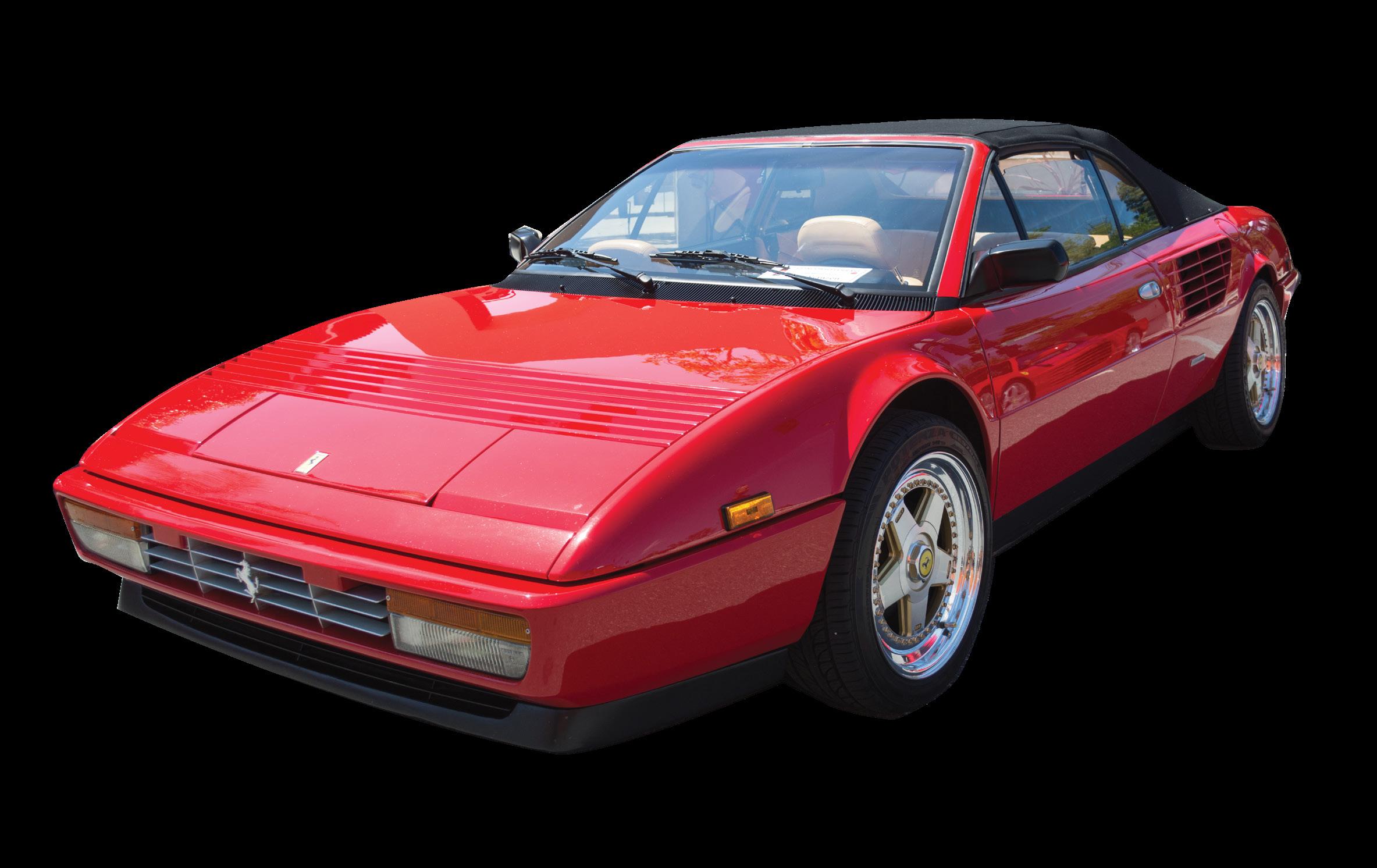
Triumph Stag
Unquestionably one of Triumph’s most iconic and recognisable silhouettes, the plucky British-born 2+2 sports tourer rolled out of the factory half a century ago. Powered by a torquey 3-litre V8 motor, the Stag remains cherished by enthusiasts and is said to provide a true, quintessentially British motoring experience from behind the wheel. Styled by prolific Italian design guru, Giovanni Michelotti, the Stag was a culmination of clean stylistic and aerodynamic features that he had tried and tested in other projects with industry-leading brands including Alfa Romeo, Maserati and Ferrari. The Stag wasn’t the only success story between Triumph and Michelotti; he was also responsible for the gorgeous Herald, Spitfire and GT6, to name but a few.

Triumph Stag © Richard P Long / Shutterstock.com

Range Rover
With current models enjoying 50 years of refinement, the original Range Rover – launched under the Rover division of British Leyland, later Land Rover – was far less opulent than its modern counterpart, but still led the way for the brand and has unarguably helped define several generations of success within Land Rover’s rich history.F
eaturing a lightweight aluminium V8 engine and permanent four-wheel drive, the new Range Rover model was billed as ‘a car for all reasons’, and over the past 50 years, has gone on to confidently live and prove that mantra. From dominating the Camel Trophy and Paris to Dakar Rally, to becoming the vehicle of choice for transporting members of the monarchy, the Range Rover has become a universal social status symbol and timeless, robust design. There’s nothing this hardened classic can’t do.
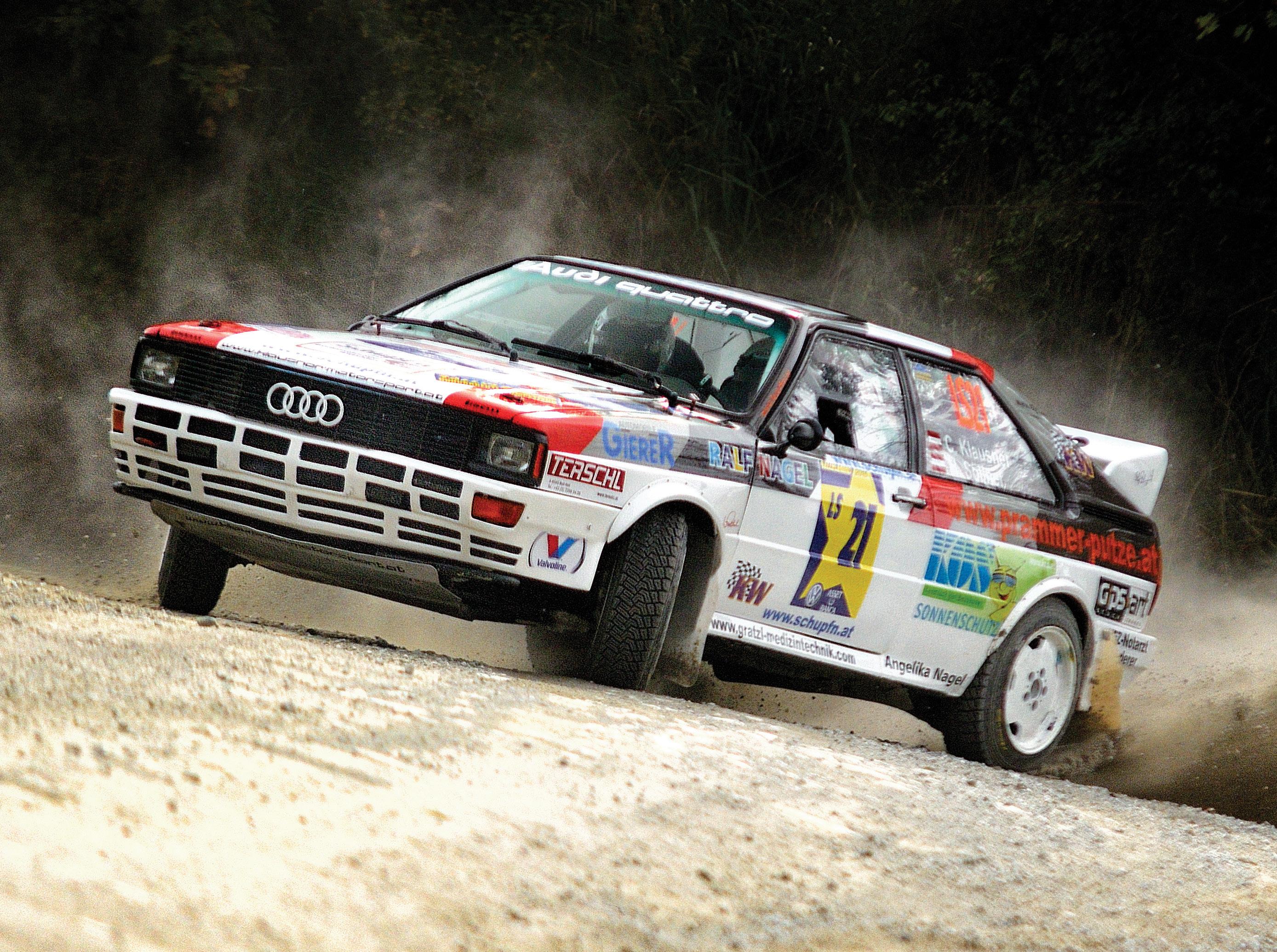
Audi Quattro © Rodrigo Garrido / Shutterstock.com
Audi Quattro
Celebrating an incredible 40-year anniversary in 2020 is the amazing Audi Quattro. The Quattro will forever be cemented in history as a pioneering vehicle thanks to the industry-leading development of a forceful four-wheel drive system that was applied to a sedan body shape. This allowed enormous amounts of traction to reach all four corners of the car. To prove the potency of this new-fangled formula, Audi entered the turbo-charged Quattro into the World Rally Championship, where it continued to dominate for over half a decade, while simultaneously achieving legendary status among motorsport fans. The most powerful rendition of the Audi Quattro was the S1 variant, which competed in the infamous Group B rally division before it was outlawed in 1987. Audi sold over 11,000 units of the roadgoing Quattro throughout its 11-year run, and it remains a dear favourite of petrolheads across the world.

BMW 8 Series © Roman Belogorodov / Shutterstock.com
BMW 8 Series
Also known by its chassis code, E31, this whale-nosed bimmer came thundering onto the scene some 30 years ago. All versions of this majestic model were powered by big motors – options ranged from a ‘small’ 4-litre V8 block to a thumping 5.6-litre V12 – meaning the 8 Series was no slouch. Total production numbers are an estimated 31,000 for the entire lifespan of the E31, making it a fairly rare sight on the roads today. And there’s no denying there’s an effortlessly cool swagger about these wedge-shaped cars – and who doesn’t love pop-up headlights? Personally, I think time has been very kind to the E31; it’s hard to believe they’re 30 years old this year.

Yes I Shoot models / Shutterstock.com
Bentley Mulsanne
Spectacularly named after the ‘Mulsanne Straight’ – a stretch of the renowned Le Mans race circuit of which Bentley dominated for four consecutive victories from 1927 to 1930 – this big Bentley boat celebrates its 40-year anniversary in 2020. This long and luxurious motorcar was powered by the famous Rolls-Roycederived 6.75-litre V8 and lugged its weighty rear around with a leisurely three-speed automatic gearbox. The regal and perfectly poised Mulsanne saw several model revivals, including the Turbo and S-line variants that were all produced in rather limited numbers by today’s standards. John Gardner even saw the Turbo R model suitable for the escapades of the infamous fictional superspy, James Bond, in two mid80s novels. Bentley’s heavyweight luxury limo returned to production after a 12-year hiatus in 2010, making older examples true bargains for anyone brave enough.

Bentley Mulsanne © Jordi_Cor / Shutterstock.com
Lamborghini Diablo
Rounding off our list is another car that has aged like a fine wine: the Lamborghini Diablo. This mid-engined Italian devil celebrates 30 years of pure style in 2020. The Diablo was a triumph for Lamborghini, and seamlessly combined the brand’s heritage with outrageously cool 80s design cues made popular in its predecessors: the Countach and Jalpa. The Diablo’s sleek new exterior styling would pave the way for the features we now know and love in the Italian marque today.I
t was arguably the first ‘modern’ iteration to leave the company’s factory in Sant’Agata Bolognese. The Diablo would go on to become Lamborghini’s flagship model, and was released in various forms, including the VT, VS and Roaster, and would see production for over 11 years. Powered by either a ferocious 5.7-litre or utterly bombastic 6.0-litre V12 motor, the Diablo quickly became an icon of the decade.R
acing to 100 km/h in a mere 4.5 seconds means the Diablo can still hold up against many modern cars on the road today, and has retained its infamous, menacing presence from all angles. A clean example of this 90’s classic will currently fetch around €200.000 in the local market. With naturally aspirated V12s and manual transmissions quickly becoming a thing of the past, the Diablo represents a golden era for supercars, offering perfect, uninterrupted driving thrills.
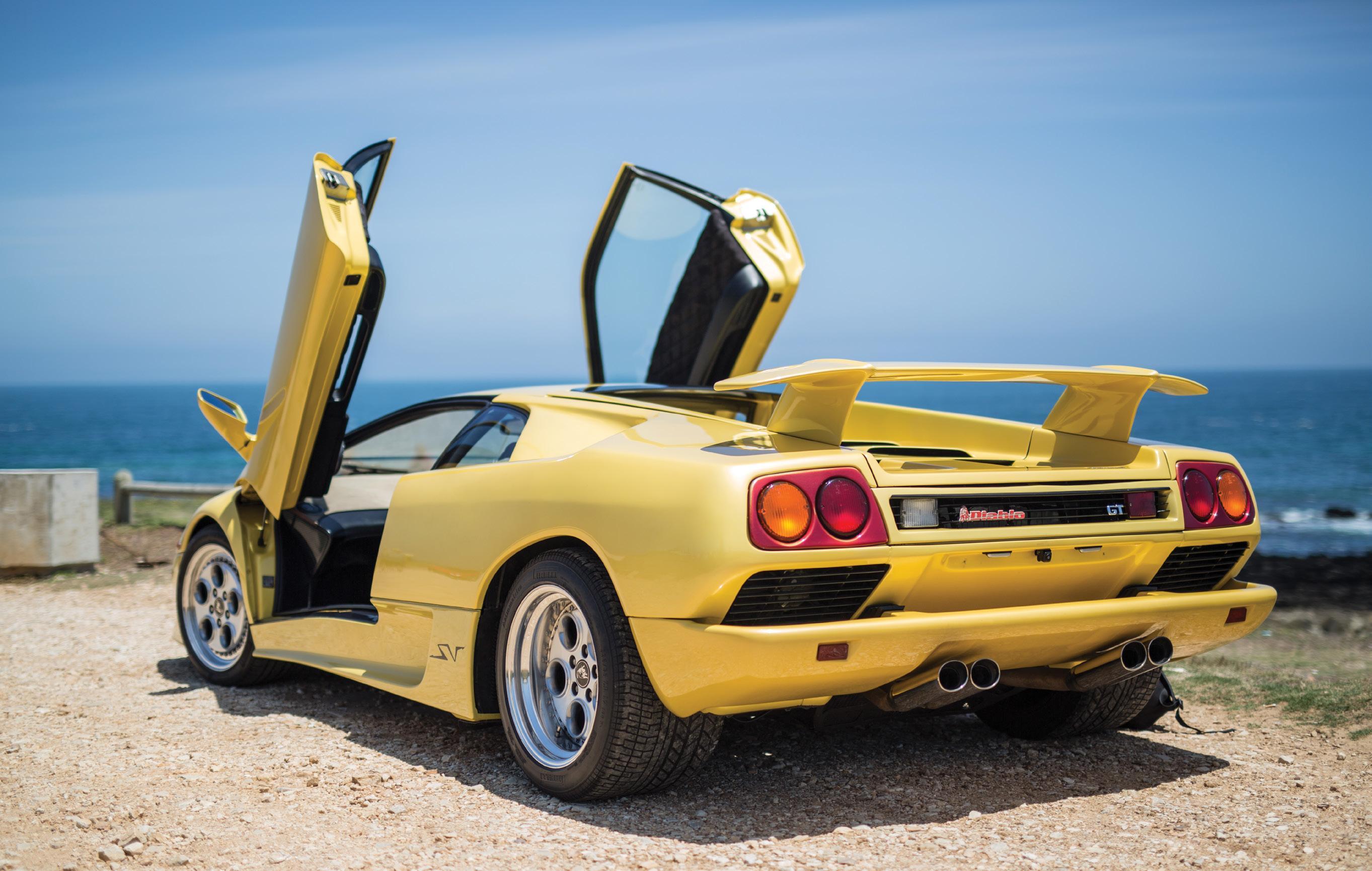
Lamborghini Diablo © MarshyPhotography / Shutterstock.com










